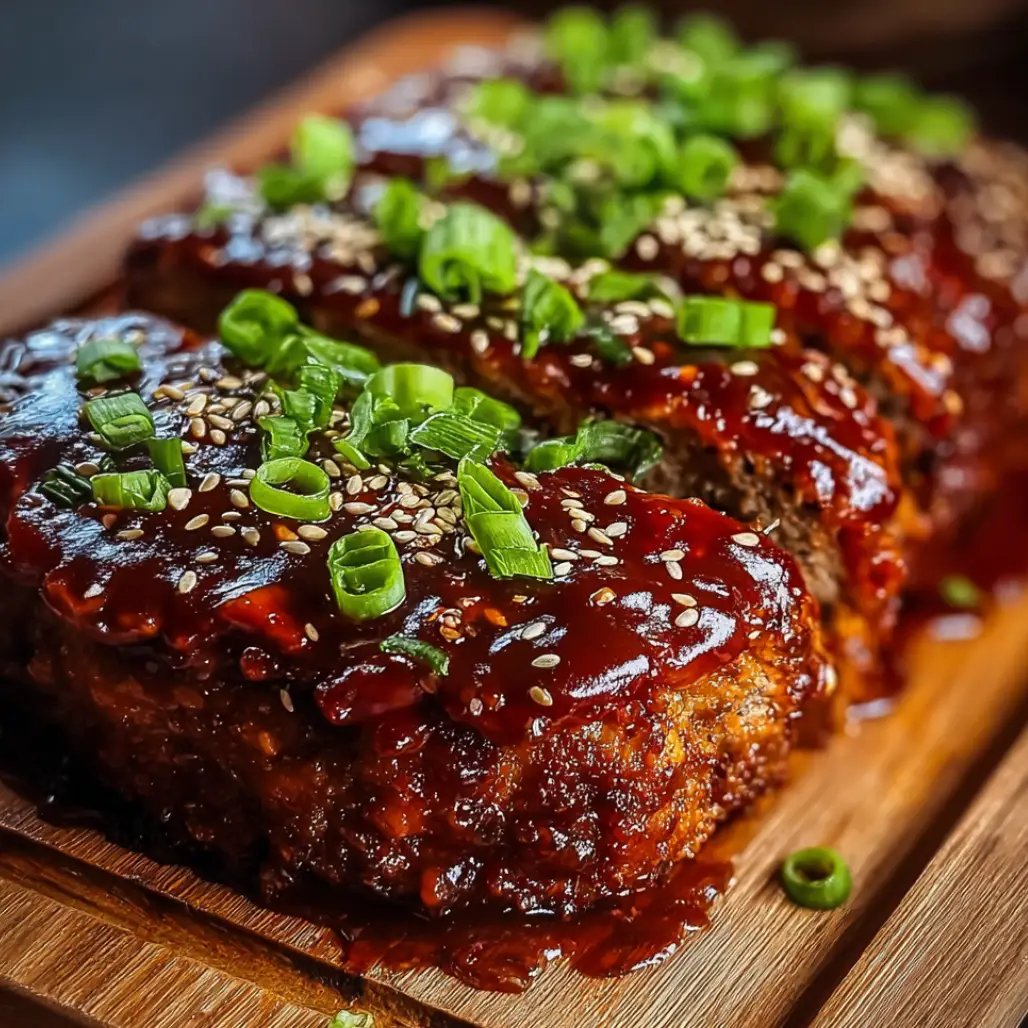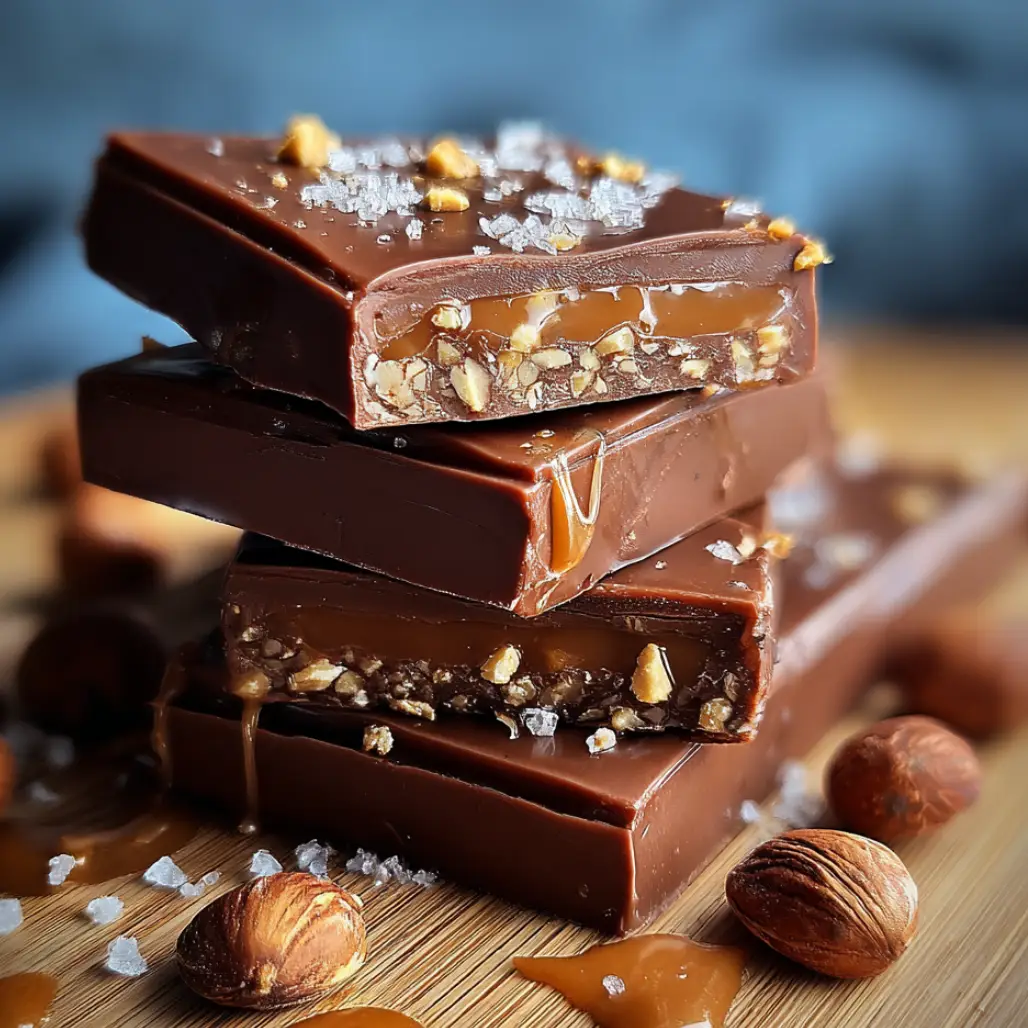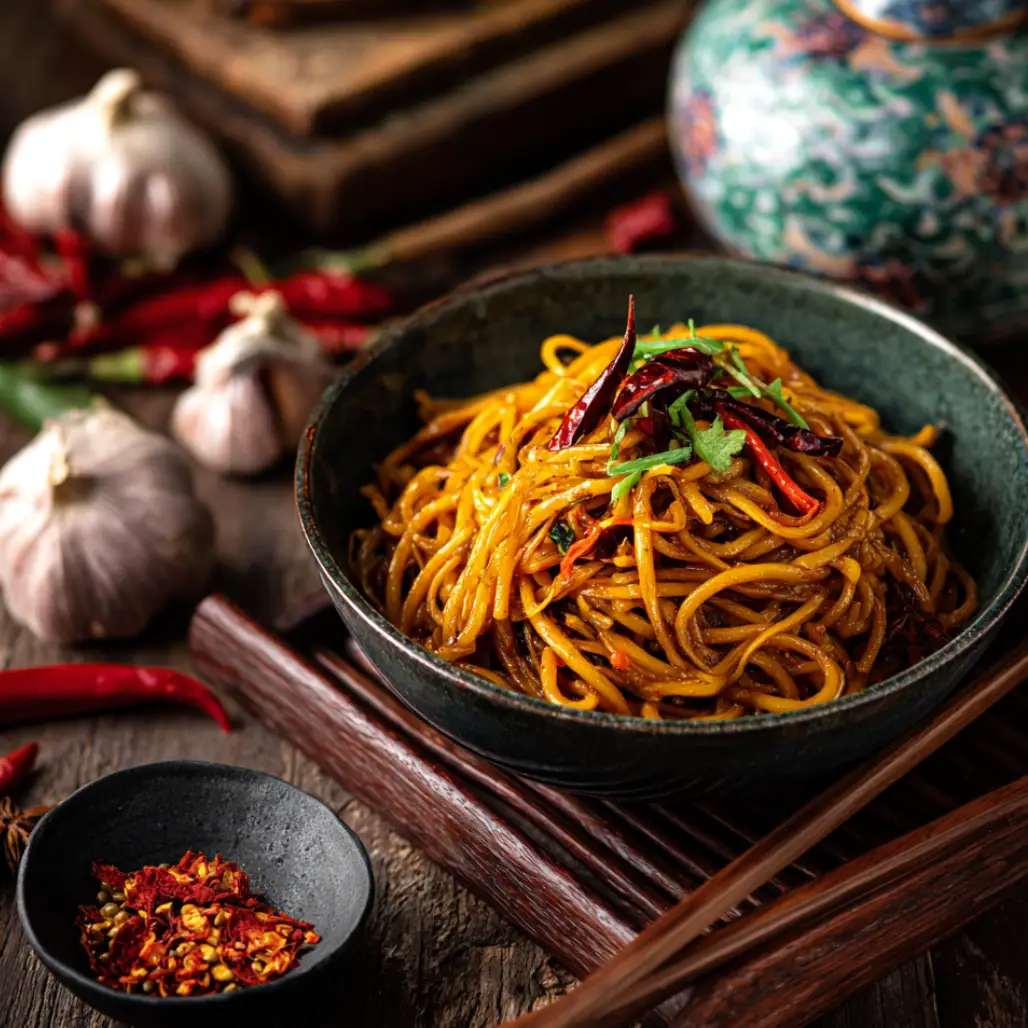| Prep Time | Cook Time | Total Time | Serves |
|---|---|---|---|
| 15 minutes | 6 hours | 6 hours 15 minutes | 6 |
When convenience meets exotic flavors, the result is this extraordinary crockpot Thai coconut chicken soup that transforms your slow cooker into a vessel for authentic Asian cuisine because this recipe delivers all the complex, aromatic flavors of traditional Tom Kha Gai without requiring constant attention or specialized cooking techniques. This creamy, fragrant soup brings together tender chicken, earthy mushrooms, and vibrant Thai aromatics in a coconut milk base that develops incredible depth through the gentle, extended cooking process because the slow cooker allows all ingredients to meld harmoniously while releasing their essential oils and creating layers of flavor that would typically require hours of careful stovetop supervision.
Why This Crockpot Thai Coconut Chicken Soup Will Transform Your Meal Planning
This crockpot Thai coconut chicken soup stands apart from traditional Thai cooking methods because it achieves authentic flavors through modern convenience, proving that you don’t need to sacrifice quality for practicality when preparing exotic cuisines at home. The genius of this slow cooker adaptation lies in its ability to extract maximum flavor from aromatic ingredients through gentle, prolonged cooking that allows delicate herbs and spices to infuse the coconut milk base thoroughly because the low, consistent heat prevents the burning or overpowering that can occur with stovetop preparation.
The convenience factor cannot be overstated when considering how this recipe brings restaurant-quality Thai flavors to busy weeknight dinners because traditional Tom Kha Gai requires careful timing and constant monitoring to prevent coconut milk separation, while this slow cooker version eliminates those concerns through controlled temperature cooking. The hands-off preparation method allows you to assemble ingredients in the morning and return home to a fully developed, aromatic soup that fills your kitchen with the intoxicating scents of lemongrass, galangal, and lime leaves.
What sets this crockpot Thai coconut chicken soup apart from other international slow cooker recipes is its faithful representation of Thai culinary principles while adapting to slow cooking constraints because every traditional element finds its perfect expression in this extended cooking format, from the aromatic base that develops complexity over time to the coconut milk that becomes silky and integrated rather than separated or grainy. The slow cooking process actually enhances certain aspects of Thai flavor development because the gentle heat allows essential oils to extract fully without becoming bitter or harsh.
Complete Ingredients List
For the Aromatic Base:
- 2 lemongrass stalks, bruised and cut into 2-inch pieces
- 2-inch piece fresh ginger, sliced
- 4 garlic cloves, smashed
- 3 shallots, quartered
- 4 kaffir lime leaves, torn (or 1 tablespoon lime zest)
- 2 Thai bird chilies, smashed
For the Soup Foundation:
- 4 cups chicken broth
- 2 tablespoons Thai red curry paste
- 2 tablespoons fish sauce
- 2 tablespoons brown sugar
- 1 tablespoon soy sauce
- 1 teaspoon salt
For the Main Components:
- 2 pounds boneless chicken thighs, cut into bite-sized pieces
- 8 ounces mixed mushrooms, sliced
- 1 red bell pepper, sliced
- 1 medium onion, sliced
- 2 carrots, sliced diagonally
For the Creamy Finish:
- 2 cans (14 oz each) full-fat coconut milk
- 3 tablespoons fresh lime juice
- 1/4 cup fresh cilantro, chopped
- 2 green onions, sliced
For Serving:
- Cooked jasmine rice or rice noodles
- Extra lime wedges
- Fresh cilantro sprigs
- Sliced Thai chilies (optional)
- Bean sprouts (optional)
Essential Ingredients for Crockpot Thai Coconut Chicken Soup
The foundation of exceptional crockpot Thai coconut chicken soup begins with understanding how slow cooking affects traditional Thai aromatics because these delicate ingredients require different handling when subjected to extended cooking times compared to quick stovetop preparation. Fresh lemongrass serves as the primary aromatic backbone because its citrusy, floral essence develops beautifully over long cooking periods, becoming mellow and integrated rather than sharp or overwhelming, while fresh ginger provides the warming spice notes that balance the coconut milk’s richness and the lime’s acidity.
Thai red curry paste acts as the flavor concentrate that ensures authentic taste development because this prepared paste contains the perfect blend of chilies, garlic, shallots, galangal, and spices that would be difficult to achieve from individual ingredients in a slow cooker setting. Quality curry paste makes the difference between authentic Thai flavor and generic spiciness because commercial pastes vary dramatically in quality and ingredient composition, with premium brands providing the complex heat and aromatic depth that defines exceptional Thai cooking.
Full-fat coconut milk creates the luxurious base that carries all other flavors while providing the signature creaminess that defines Tom Kha Gai because the high fat content prevents separation during extended cooking and creates the rich mouthfeel that makes this soup so satisfying. Light coconut milk often fails in slow cooker applications because the reduced fat content leads to curdling and separation that cannot be corrected once it occurs, resulting in an unappetizing grainy texture.
Chicken thighs deliver superior results compared to breast meat because their higher fat content and connective tissue create tender, juicy pieces that remain moist throughout the long cooking process while contributing additional richness to the soup base. Fish sauce provides the essential umami depth that balances sweetness and creates the complex flavor profile that characterizes authentic Thai cuisine, while brown sugar adds the subtle sweetness that harmonizes with the coconut milk and balances the soup’s overall taste.
Fresh mushrooms contribute earthy depth and meaty texture that complements the chicken beautifully because mushrooms absorb the aromatic coconut broth while maintaining their distinctive texture and contributing their own savory compounds to the overall flavor development.
The Art of Creating Perfect Crockpot Thai Coconut Chicken Soup
Mastering crockpot Thai coconut chicken soup requires understanding how slow cooking principles apply to Thai cuisine because the gentle, extended heat extraction differs fundamentally from traditional Thai cooking methods that rely on quick, high-heat techniques. The key lies in adapting ingredient preparation and timing to maximize flavor development while preventing the textural issues that can plague coconut milk-based dishes in slow cooker environments.
Layer development becomes crucial when building flavors in a slow cooker because ingredients added at different stages contribute varying levels of intensity and character to the finished soup. The aromatic base requires initial preparation to release essential oils, while proteins and vegetables need strategic timing to maintain optimal texture and nutritional value throughout the extended cooking process.
Temperature considerations play a vital role in preventing coconut milk separation because the consistent, gentle heat of slow cooking can either create perfect emulsification or cause irreversible curdling depending on timing and technique. Understanding when to add coconut milk during the cooking process determines whether you achieve silky, integrated creaminess or disappointing separation that compromises both texture and visual appeal.
Flavor balance requires careful attention to the interplay between sweet, sour, salty, and spicy elements because slow cooking intensifies certain flavors while mellowing others, and the extended cooking time allows for flavor development that may require different proportions than traditional stovetop preparation to achieve the same balanced result.
Step-by-Step Instructions for Crockpot Thai Coconut Chicken Soup
Begin by preparing all aromatic ingredients because proper preparation ensures optimal flavor extraction during the long cooking process. In a large skillet over medium heat, lightly toast 2 bruised lemongrass stalks, 2-inch piece sliced ginger, 4 smashed garlic cloves, 3 quartered shallots, 4 torn kaffir lime leaves, and 2 smashed Thai chilies for 2-3 minutes until fragrant because this brief toasting awakens essential oils and creates deeper flavor development than simply adding raw aromatics to the slow cooker.
Professional Tip: Bruise lemongrass stalks with the back of a knife and remove tough outer layers before cutting to ensure maximum flavor extraction during the slow cooking process.
Key Points: The aromatics should be fragrant but not browned, and you should smell the distinctive citrus and herbal aromas that indicate proper essential oil release from the fresh ingredients.
Transfer the toasted aromatics to your slow cooker and add 4 cups chicken broth, 2 tablespoons Thai red curry paste, 2 tablespoons fish sauce, 2 tablespoons brown sugar, 1 tablespoon soy sauce, and 1 teaspoon salt, whisking well to dissolve the curry paste completely because undissolved paste creates uneven flavor distribution and can result in bitter spots throughout the soup. Add 2 pounds bite-sized chicken thigh pieces to the slow cooker, ensuring they are well-distributed throughout the liquid for even cooking.
Professional Tip: Whisk curry paste with a small amount of warm broth before adding to the slow cooker to ensure complete dissolution and prevent lumps from forming during cooking.
Key Points: The curry paste should be completely dissolved with no visible lumps, and the chicken should be evenly distributed throughout the aromatic broth for uniform cooking and flavor absorption.
Layer 8 ounces sliced mushrooms, 1 sliced red bell pepper, 1 sliced onion, and 2 diagonally sliced carrots over the chicken because layering vegetables on top prevents them from overcooking while allowing them to absorb the aromatic vapors that rise during the cooking process. Cover the slow cooker and cook on LOW for 5-6 hours or HIGH for 2-3 hours until the chicken is tender and the vegetables are cooked through but still maintain some texture.
Professional Tip: Cut vegetables into uniform sizes to ensure even cooking, and arrange them strategically with harder vegetables like carrots toward the bottom where they receive more direct heat.
Key Points: The cooking time may vary depending on your slow cooker model, so check for doneness by ensuring chicken is fully cooked and vegetables are tender but not mushy.
During the last 30 minutes of cooking, carefully stir 2 cans full-fat coconut milk into the soup, being gentle to avoid breaking up the chicken pieces because coconut milk added too early in the process can separate or curdle from extended exposure to heat. The coconut milk should be stirred in gradually to prevent temperature shock that can cause curdling, and the soup should continue cooking just long enough to heat the coconut milk through without boiling vigorously.
Professional Tip: Shake coconut milk cans well before opening to ensure proper emulsification, and add the coconut milk gradually while stirring gently to maintain smooth integration.
Key Points: The soup should become creamy and pale in color after adding coconut milk, with no signs of separation or curdling visible in the finished product.
Remove the slow cooker from heat and carefully remove large pieces of lemongrass, ginger, and lime leaves using tongs or a slotted spoon because these aromatics have served their purpose and can be unpleasant to bite into during eating. Stir in 3 tablespoons fresh lime juice, 1/4 cup chopped cilantro, and 2 sliced green onions just before serving because these fresh elements provide brightness and color that complement the rich, creamy base.
Professional Tip: Taste the soup before adding lime juice and add gradually because slow cooking can concentrate flavors differently than stovetop preparation, and you may need less lime juice than expected.
Key Points: The finished soup should have a balanced flavor profile with no single element overpowering the others, and the fresh herbs should provide visual appeal and bright flavor contrast to the rich coconut base.
Serve immediately in warmed bowls over cooked jasmine rice or rice noodles if desired, garnishing with extra cilantro, lime wedges, sliced chilies, and bean sprouts for diners to customize their bowls according to personal preferences because traditional Thai serving style allows individuals to adjust flavors and textures to their liking.
Professional Tip: Warm serving bowls beforehand to maintain optimal soup temperature, and provide garnishes in separate small bowls so diners can create their perfect combination of flavors and textures.
Key Points: The soup should be aromatic and creamy with visible fresh herbs and attractive presentation that showcases the vibrant colors and textures of all ingredients in an appealing, restaurant-quality display.
Professional Tips for Crockpot Thai Coconut Chicken Soup Success
Ingredient quality dramatically impacts the final result because slow cooking cannot improve inferior ingredients, and the extended cooking time actually amplifies any off-flavors or poor-quality components throughout the entire dish. Source Thai ingredients from Asian markets when possible because specialty stores typically carry fresher, more authentic products that create noticeable improvements in flavor and aroma compared to generic grocery store alternatives that may lack potency and authenticity.
Timing considerations become crucial when using a slow cooker for Thai cuisine because different ingredients require varying cooking durations to maintain optimal texture and flavor contribution. Add delicate vegetables and herbs during the final stages of cooking to prevent them from becoming mushy or losing their distinctive characteristics, while heartier ingredients can withstand the full cooking time without degradation.
Coconut milk handling requires special attention because this ingredient is prone to separation and curdling when improperly managed in slow cooker environments. Always use full-fat coconut milk for best results, shake cans thoroughly before opening, and add coconut milk during the final 30 minutes of cooking to prevent textural issues that can ruin an otherwise perfect soup.
Flavor balance testing throughout the cooking process helps achieve optimal results because slow cooking can intensify certain flavors while mellowing others, and the extended cooking time may require different seasoning proportions than traditional recipes to achieve the same balanced taste profile that characterizes exceptional Thai cuisine.
Creative Variations for Crockpot Thai Coconut Chicken Soup
Transform this base recipe into exciting variations by incorporating different proteins and vegetables that complement the traditional Thai flavor profile because the slow cooker format adapts beautifully to various modifications while maintaining the essential aromatic character that defines authentic Thai cuisine. Replace chicken with fresh shrimp or firm white fish added during the final 30 minutes of cooking for seafood versions that absorb the coconut broth beautifully, while tofu and mixed Asian vegetables create satisfying vegetarian adaptations that maintain the soup’s essential appeal.
Regional Thai variations reflect different cooking styles and ingredient availability because Thailand’s diverse culinary landscape includes numerous interpretations of coconut-based soups that incorporate local specialties and seasonal ingredients. Northern Thai versions often include pork and local vegetables, while Southern Thai adaptations feature seafood and pineapple that add tropical sweetness and additional complexity to the traditional flavor profile without overwhelming the coconut base.
Spice level adjustments accommodate different heat tolerances because Thai cuisine traditionally offers varying degrees of spiciness to suit individual preferences without compromising the dish’s authentic character. Increase heat with additional Thai chilies or extra curry paste, while reducing spiciness involves using milder curry paste varieties or removing seeds from chilies before adding them to the slow cooker.
Noodle and grain additions create heartier meal versions because the coconut broth pairs beautifully with various starches that absorb the aromatic flavors while providing additional substance and satisfaction. Rice noodles, cellophane noodles, or jasmine rice can be added during the final stages of cooking to create complete one-pot meals that satisfy hunger while delivering authentic Thai flavors.
Perfect Pairings for Crockpot Thai Coconut Chicken Soup
The aromatic, complex nature of crockpot Thai coconut chicken soup calls for accompaniments that enhance rather than compete with its delicate flavor balance because the ideal meal creates harmony through thoughtful pairing rather than overwhelming the palate with conflicting tastes and textures. Steamed jasmine rice serves as the traditional and perfect companion because its neutral flavor and fluffy texture provide the ideal vehicle for absorbing the aromatic coconut broth while adding satisfying substance that transforms the soup into a complete meal.
Fresh, crisp salads with bright, acidic dressings provide excellent contrast to the rich coconut base because the textural difference and clean flavors cleanse the palate between spoonfuls while adding essential vegetables and nutrients to the overall meal composition. Consider mixed green salads with lime vinaigrette or Thai-style cucumber salad that reinforces the Southeast Asian theme while providing cooling refreshment that balances the soup’s warmth and richness.
Beverage pairings should complement rather than mask the soup’s complex aromatics because crockpot Thai coconut chicken soup contains delicate herb and spice notes that can be easily overwhelmed by strong flavors or high alcohol content. Thai iced tea or coconut water provide traditional accompaniments that enhance the coconut theme, while light white wines like Riesling or Gewürztraminer offer Western alternatives that complement the aromatic herbs without competing for attention.
For appetizer courses, consider serving alongside artisanal snacks and appetizers that provide textural variety without overwhelming the main dish, such as fresh spring rolls, Thai-style dumplings, or seasoned rice crackers because these options create a cohesive Southeast Asian dining experience while maintaining focus on the soup as the centerpiece.
Discover More Delicious International Slow Cooker Combinations
Expanding your international slow cooking repertoire creates opportunities to explore dishes that share similar techniques and convenience factors because understanding these connections helps develop more sophisticated cooking skills while building a collection of globally-inspired recipes that bring exotic flavors to busy weeknight dinners. Explore savory side dishes that complement coconut-based soups, such as curry-spiced vegetables, herb-infused grains, or Asian-style pickled vegetables because these sides provide additional substance while maintaining flavor harmony with Southeast Asian cuisine.
Consider pairing crockpot Thai coconut chicken soup with flavorful dips and marinades for appetizer service, creating an interactive dining experience that encourages exploration of complementary flavors and textures throughout the meal. Options like peanut satay sauce, sweet chili dip, or herb-infused oils reinforce the Southeast Asian theme while offering variety in tastes and textures that please different preferences and dietary requirements.
Complete the meal with refreshing beverages that balance the soup’s richness and aromatic intensity, such as tropical fruit waters, herbal teas, or traditional Thai drinks because appropriate beverage selection aids digestion and prevents palate fatigue while enhancing the overall cultural dining experience. The goal is creating harmony between all meal components while allowing the soup to remain the star attraction.
For special brunch occasions, consider incorporating breakfast favorites as companions because crockpot Thai coconut chicken soup works beautifully as part of international brunch spreads, particularly when served alongside tropical fruits, coconut-based pastries, or rice-based dishes that complement rather than compete with the soup’s aromatic, satisfying character.
Storage Guidelines for Crockpot Thai Coconut Chicken Soup
Proper storage techniques ensure that crockpot Thai coconut chicken soup maintains its quality and complex flavor profile while preserving the delicate balance of aromatics and preventing textural degradation that can occur when coconut milk-based soups are improperly handled during storage and reheating processes. Allow the soup to cool completely to room temperature before refrigerating because placing hot soup directly in the refrigerator can raise internal temperatures and create condensation that affects both the soup’s quality and the safety of other stored foods.
Store cooled soup in airtight containers in the refrigerator for up to 4 days, understanding that the coconut milk may separate slightly during storage because fat and water components naturally separate over time, but this separation can be easily corrected through gentle reheating and stirring techniques. When reheating, use the lowest possible heat setting and stir frequently to re-emulsify the coconut milk and restore the soup’s smooth, creamy texture without causing additional separation or curdling.
Freezing considerations require special attention because coconut milk-based soups can develop significant textural changes when frozen and thawed, potentially creating grainy or separated consistency that affects both visual appeal and mouthfeel significantly. For best results when freezing, consider storing the aromatic broth base without the coconut milk, adding fresh coconut milk when reheating to maintain optimal texture and flavor integration that matches the original preparation quality.
When reheating frozen or refrigerated soup, use gentle heat and constant stirring to prevent scorching or separation because coconut milk is extremely sensitive to temperature changes and can curdle irreversibly if heated too aggressively or unevenly. Add fresh herbs, lime juice, and aromatics during reheating to restore the soup’s original brightness and complexity that may have diminished during storage, ensuring the reheated soup maintains the quality and appeal of the freshly prepared version.
The Science Behind Perfect Crockpot Thai Coconut Chicken Soup
Understanding the scientific principles behind crockpot Thai coconut chicken soup creation helps achieve consistent results while troubleshooting potential issues because slow cooking involves specific chemical and physical processes that differ significantly from traditional Thai cooking methods. The extended, gentle heat extraction allows essential oils and volatile compounds to develop differently than quick, high-heat stovetop preparation, creating unique flavor profiles that can be superior to traditional methods when properly executed.
Coconut milk behavior in slow cooker environments requires understanding emulsification science because the proteins and fats in coconut milk respond predictably to different temperature ranges and cooking durations. The gentle, consistent heat of slow cooking can create perfect emulsification when coconut milk is added at the correct time, but excessive heat or prolonged exposure can cause irreversible protein coagulation that results in separation and graininess.
Aromatic compound extraction follows specific patterns during extended cooking because essential oils and volatile compounds have different boiling points and solubility characteristics that determine when and how they contribute to the overall flavor profile. Understanding these extraction patterns explains why certain aromatics should be added at the beginning for deep flavor development, while others perform better when added at the end to preserve their delicate characteristics.
Protein denaturation in chicken occurs gradually during slow cooking because the gentle heat allows collagen to break down slowly into gelatin, creating tender texture while preserving moisture and contributing to the soup’s overall richness and mouthfeel. This process differs from quick cooking methods that can toughen proteins if not carefully controlled, making slow cooking ideal for achieving consistently tender results.
Troubleshooting Common Crockpot Thai Coconut Chicken Soup Issues
Separated or curdled coconut milk represents the most common issue when making coconut milk-based soups in slow cookers because temperature control and timing significantly affect the stability of coconut milk emulsions. Prevent separation by using full-fat coconut milk, adding it during the final 30 minutes of cooking, and maintaining gentle heat throughout the process because these precautions minimize the conditions that cause protein coagulation and fat separation.
If separation occurs despite precautions, try removing the soup from heat immediately and whisking vigorously while gradually adding small amounts of fresh coconut milk because this technique can sometimes re-emulsify the mixture, though prevention remains preferable to correction attempts. For future batches, ensure your slow cooker doesn’t run too hot by testing with water and a thermometer, as some models maintain higher temperatures than others even on low settings.
Bland or weak flavors often result from insufficient curry paste or inadequate aromatic preparation because slow cooking can dilute flavors differently than stovetop preparation, requiring adjustments to traditional ingredient proportions. Increase curry paste gradually during cooking, taste frequently, and don’t hesitate to add more fish sauce, lime juice, or aromatics to achieve the bold flavor profile that characterizes exceptional Thai cuisine.
Overcooked vegetables typically occur when timing isn’t properly managed because different vegetables require varying cooking durations to maintain optimal texture and nutritional value. Add delicate vegetables like bell peppers and mushrooms during the final 2-3 hours of cooking, while heartier vegetables like carrots can withstand the full cooking time without becoming mushy or losing their distinctive characteristics and visual appeal.
Additional Inspiration for International Slow Cooking Mastery
Mastering crockpot Thai coconut chicken soup opens doors to exploring other international slow cooker adaptations that bring global flavors to convenient home cooking because understanding how traditional recipes adapt to slow cooking principles enables confident experimentation with cuisines from around the world. Consider exploring perfect side dishes that complement slow-cooked international dishes, such as curry-spiced vegetables, coconut rice preparations, or herb-infused grain dishes because these accompaniments create complete meals that satisfy cultural authenticity while maintaining practical convenience.
The techniques learned in creating crockpot Thai coconut chicken soup apply directly to other coconut milk-based international dishes because the fundamental principles of emulsification, aromatic extraction, and flavor balancing remain consistent across similar recipes from various Southeast Asian and tropical cuisines. This knowledge enables confident exploration of curries, stews, and soups from Thailand, Malaysia, Indonesia, and the Caribbean while maintaining successful results.
Regional variations provide opportunities to incorporate local ingredients and seasonal availability while maintaining the core appeal of the original recipe because slow cooking techniques adapt beautifully to different vegetables, proteins, and spice combinations throughout the year. Consider exploring other Thai slow cooker adaptations, Malaysian rendang variations, or Indonesian curry adaptations that use similar ingredient combinations and cooking principles.
Complete your international slow cooking journey by exploring dessert recipes that provide satisfying conclusions to exotic meals because the ideal dinner progression includes sweets that complement rather than compete with bold, complex flavors, creating memorable dining experiences that transport diners to distant lands through carefully crafted flavor combinations that celebrate global culinary traditions.
Conclusion
Crockpot Thai coconut chicken soup represents the perfect marriage of convenience and authenticity because it demonstrates how modern cooking methods can honor traditional flavors while adapting to contemporary lifestyle demands that require practical solutions for complex international cuisines. This recipe embodies the principles that make slow cooking so appealing for busy families while proving that exotic flavors don’t require constant attention or specialized equipment to achieve restaurant-quality results that satisfy both convenience and culinary adventure.
The versatility of crockpot Thai coconut chicken soup makes it an invaluable addition to any cook’s international repertoire because it adapts beautifully to dietary modifications, seasonal variations, and personal spice preferences while maintaining its essential character and authentic appeal that transports diners to the aromatic street markets of Thailand. Whether serving as an exotic weeknight dinner or an impressive centerpiece for entertaining, this soup delivers consistent results that build confidence in international cooking while expanding culinary horizons.
Most importantly, crockpot Thai coconut chicken soup creates opportunities for cultural exploration and family bonding because food serves as a bridge between cultures while bringing people together around the table to experience new flavors and aromas that broaden perspectives and create lasting memories. The process of preparing this aromatic soup becomes a journey of discovery that connects us to the rich culinary heritage of Thailand while demonstrating that exceptional international cuisine can be both accessible and convenient, proving that the best comfort foods often come from the most unexpected combinations of tradition and innovation working together in perfect harmony.









